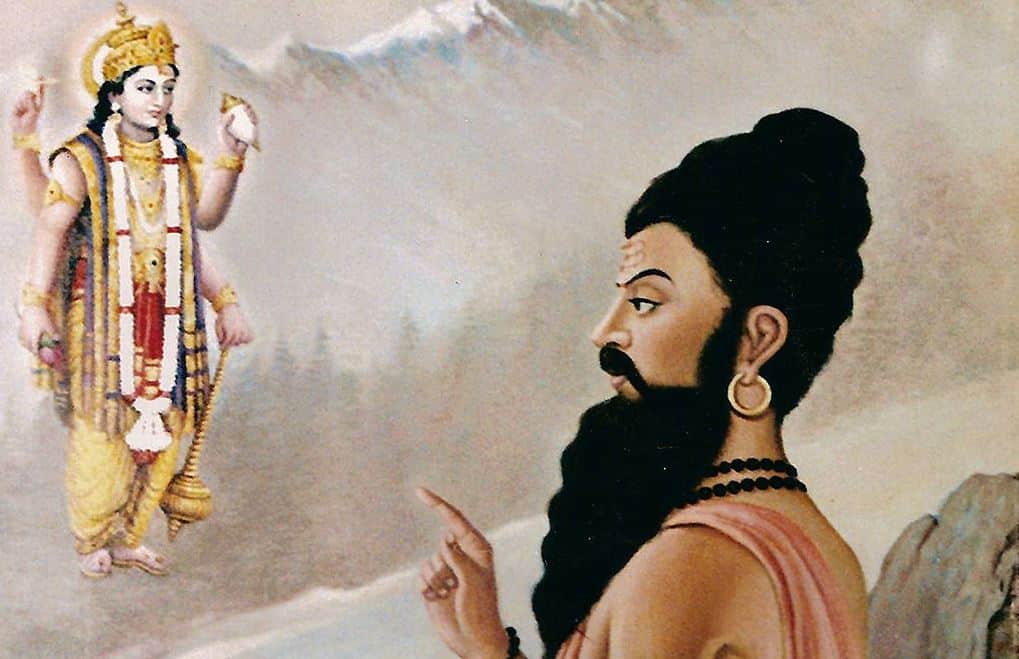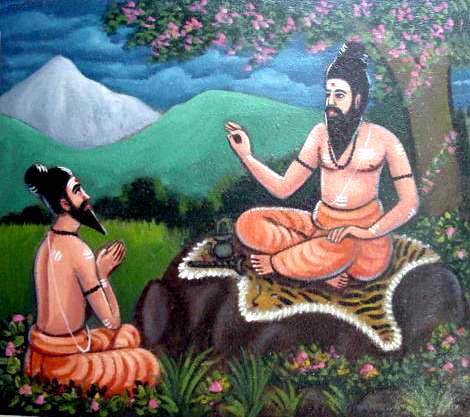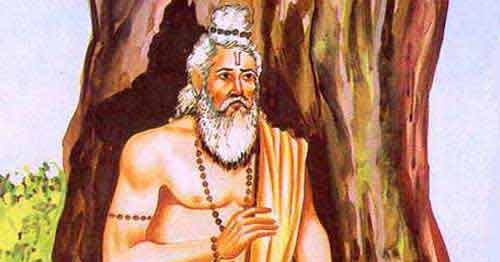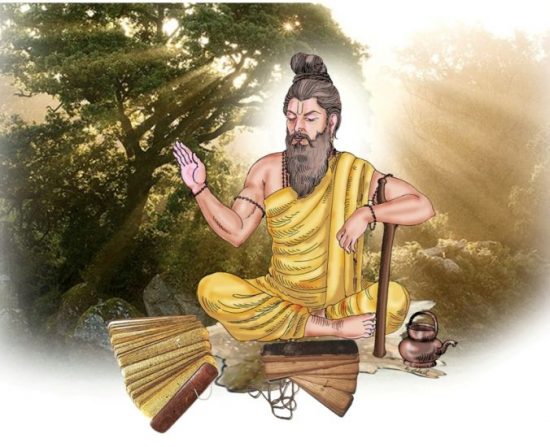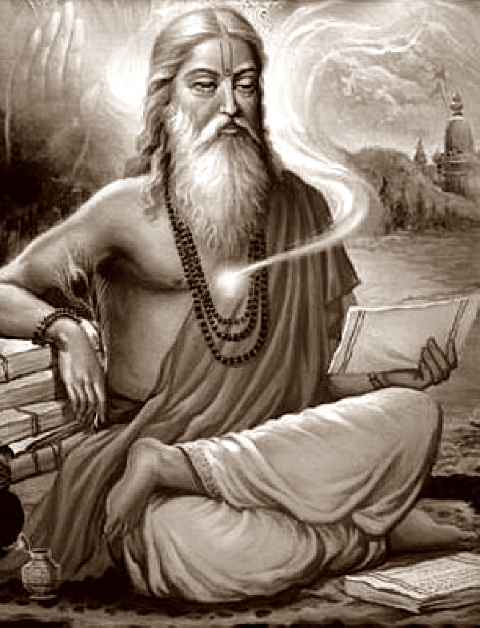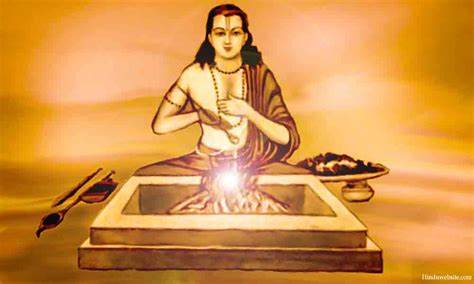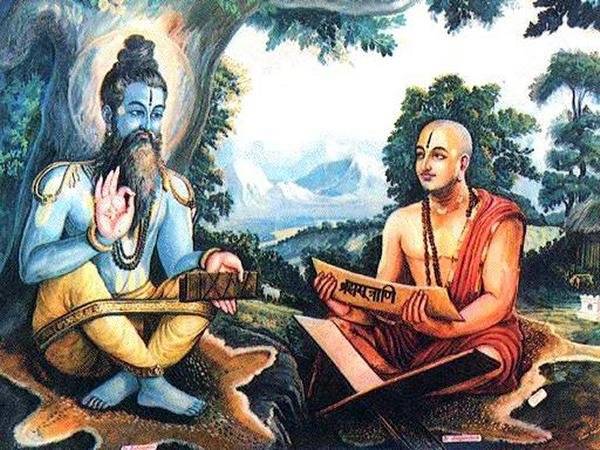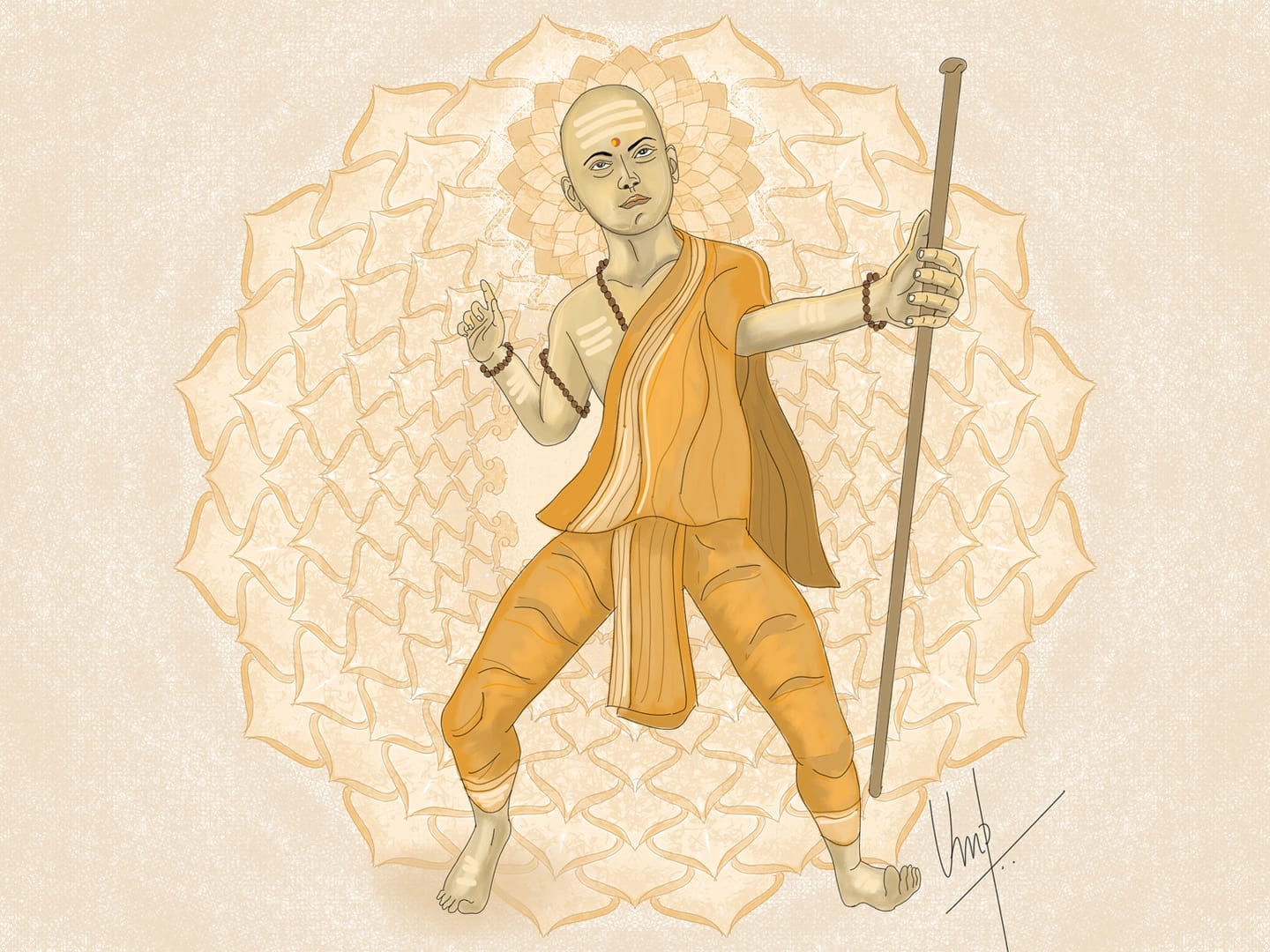Bhoganathar, also known as Boganathar or Bhogar, is a legendary figure in the Tamil Siddha tradition, which is a spiritual and alchemical tradition that originated in ancient Tamil-speaking regions of South India. Bhoganathar is considered one of the eighteen Siddhars, who were accomplished and enlightened beings with mastery over various yogic and alchemical practices.
Here are some key points associated with Bhoganathar:
- Siddha Tradition: Bhoganathar is revered in the Siddha tradition, which is known for its emphasis on spiritual practices, alchemy, herbal medicine, and the attainment of immortality.
- Alchemical Contributions: Bhoganathar is credited with significant contributions to alchemy (Rasayana) and the development of herbal medicines. Legends suggest that he was adept at creating the elixir of immortality, and he is often depicted as holding a “kundalini kal,” a vessel symbolizing the alchemical process.
- Tirukkanda Panchanga: Bhoganathar is said to have authored the Tirukkanda Panchanga, an ancient Tamil almanac that provides insights into astrology, astronomy, and traditional Indian timekeeping methods.
- Palani Hills Connection: There are legends associating Bhoganathar with the Palani Hills in Tamil Nadu, India. It is said that he resided in the Palani Hills and that his samadhi (final resting place) is located there.
- Spiritual Teachings: Bhoganathar is considered a spiritual teacher, and his teachings are often esoteric and mystical. He is said to have emphasized the importance of inner transformation and the awakening of spiritual consciousness.
- Iconography: In art and depictions, Bhoganathar is often portrayed with matted hair, holding an alchemical vessel, and engaged in yogic postures.
It’s important to note that the details of Bhoganathar’s life and teachings are often shrouded in mysticism, and historical accuracy may be challenging to ascertain. Nevertheless, he remains an important and revered figure in the Siddha tradition, and his teachings continue to influence spiritual seekers in the region. Legends and stories about Bhoganathar are passed down through oral traditions and ancient texts associated with the Siddha tradition.
An Oceanic Life Story
Boganathar or Bogar, the Jnana Guru of Babaji, in the poem “Bogar inana Sagarama” (Bogar’s Oceanic Life Story, consisting of 557 verses, Verse number 2, lines number 3 and 4), identifies himself as a Tamilian,
(Ramaiah, 1979; 1982, p. 17)[1]. In the same verse he states that the great Siddha Kalangi Nathar initiated him in Jnana Yoga (supreme self-knowledge).
Kalangi Nathar was born in Kasi (Benares), India. He attained the immortal state of soruba samadhi at the aged of 315, and then made China the center of his teaching activities. He belonged to the ancient tradition of Nava (nine) Nath sadhus (holy ascetics), tracing their tradition to Lord Shiva. There are nine important shrines associated with this tradition, five of which are in the Himalayan mountains: Amarnath (where Shiva first taught Kriya Yoga to his Shakti partner, Parvati Devi), Kodarnath, Badrinath (India), Kailasanath, (Tibet) and Pasupathinath (Nepal).
Meanwhile, Boganathar practiced Kundaflni Yogam in four stages. The first three stages are described in a later chapter on “The Psychophysiology of Kriya Kundalini Pranayama”. Boganathar chose the Palani malai (mountain) in what is now southwestern Tamil Nadu as the site for intensive yogic practice (tapas) for the final stage. He attained soruba samadhi at Palani, through the grace of Lord Muruga, or the eternal youth, “Kumaraswamy”. The Kumaraswamy temple at Palani became the epicenter of his activities. He visited many countries astrally, and physically and through transmigration. In one of his songs Boganathar claims to have flown to China at one point in a sort of airplane which he built; he held discussions with Chinese Siddhas before returning to India (Kailasapathy, 1969, p. 197-211). His visit to South America has been confirmed by accounts left by the Muycas of Chile: “Bocha, who gave laws to Muycas, was a white, bearded man, wearing long robes, who regulated the calendar, established festivals, and vanished in time like others (other remarkable teachers who had come across the Pacific according to numerous legends of Incas, Aztecs and Mayans). ” (Lal, 1965, p. 20)[2]. He convened a meeting of many siddhas just before the beginning of the present Kali Yuga, in 3102 B.C., to determine the best way for humanity to progress along the spiritual path during the con-ling period of darkness. The Yoga of love and devotion, Bhakti Yoga, was chosen as being the best means. Boganathar was entrusted by the siddhas with the task of defining the rituals for the worship of their favorite deity “Palaniandavar”, the Lord (Muruga) of Palani.
Many rituals which center around the bathing (Abishekam) of an idol of Palaniandavar with many substances, including panchaamirtham consisting of five fruits and honey, were developed by him and continue to be followed to this day. The idol had to be created from a substance which would last throughout Kali Yuga. The most resilient of known substances, granite, was known to wear and crack after thousands of such rituals. So Boganathar fashioned it out of nine secret herbal and chemical ingredients, nava pashanam, which made it harder than granite. Eight of the ingredients were combined in a mold of the idol. The ninth, was added as a catalyst, to solidify it.
In recent times the scientists who attempted to determine the composition of a small sample of the material of the idol, were startled to find that it immediately subtle mated when heated. Thus its composition remains a mystery to date. The traces of the substance are contained in the ritual offerings in which it is bathed. When these are returned and consumed by the devotee, their spiritual progress is enhanced.
A Mission to China and Transmigration
Kalangi Nathar decided to enter into samadhi in seclusion for 3,000 years. He summoned Boganathar telepathically from Tamil Nadu to China to take over his mission. Boganathar travelled by sea, following the trade route. In China, he was instructed by Kalangi Nathar in all aspects of the Siddha sciences. These included the preparation and use of the kaya kalpa herbal formulae to promote longevity. After Kalangi Nathar entered into trance, Boganathar assumed his teaching mission to the Chinese. To facilitate this, he transmigrated his vital body into the physical body of a deceased Chinese man, and thereafter went by the name “Bo-Yang”. “Bo” is a derivation of the word “Bhogam” which means Bliss, material and spiritual. This Bliss, for which he was named “Bo-Yang” is experienced when the Kundalini shakti, the feminine primordial yin energy awakens, passes up to the crown of the head, the seat of Shiva, the masculine yang pole, in the Sahasrara chakra at the summit of the head and unites with it. The result of this integration of feminine and masculine parts of the being, or union (“Yoga”) of Shakti and Shiva, Yin and Yang, is Satchitananda: Absolute Existence-Consciousness Bass.
Transformation or His Physical Body Boganathar decided to overcome the limitations of the Chinese body, with its degenerative tendencies, and prolong its life through the use of the kaya kalpa herbs long enough for the effect of Kriya Kundalini Pranayama and related yogic techniques to bring soruba samadhi. In his poem Bogar Jnana Sutra – 8, verse number 4, he describes vividly what happened after carefully preparing a tablet using thirty five different herbs:
With great care and patience I made the(kaya kalpa) tablet and then swallowed it, Not waiting for fools and skeptics who would not appreciate its hidden meaning and importance. Steadily I lived in the land of the Parangis (foreigners) For twelve thousand years, my fellow! I lived for a long time and fed on the vital ojas (sublimated spiritual energy) With the ojas vindhu I received the name, Bogar; The body developed the golden color of the pill,-Now I am living in a world of gold (based upon translation by Yogi S.A.A. Ramaiah, 1979, P. 40-42).
He chose three of his best disciples and his faithful dog, and took them to the top of a mountain. After first offering a tablet to the dog, the dog immediately fell over dead. He next offered it to his leading disciple, Yu, who also immediately fell over dead. After offering it to the two remaining disciples, who by this time wore extremely nervous, and who promptly hid their tablets rather than swallow them, Boganathar swallowed the remaining tablets and also fell over unconscious. Crying with grief, the two remaining disciples went down the mountain to get material to bury the bodies. When the disciples returned to the spot where the bodies had been left lying, all that was found was a note, in Boganathar’s handwriting, which said:
The kaya kalpa tablets are working. After awakening from their trance I restored faithful Yu and the dog. You have missed your chance for immortality. (Ibid.)
This kaya kalpa enabled Boganathar to transform the Chinese body over a period of 12,000 years, during which time it developed a lustrous golden color. (The physiological transformation to the state of soruba samadhi was, however, completed only later, at Palani in the final phases of Kriya Kundalini Yoga and related practices. These phases will be described in chapter 11. Boganathar’s own graphic description is recorded in the poem at the end of this chapter Initiation into Samadhi.)
In this poem Sutras of Wisdom – 8, he sings prophetically of the taking up of the practice of pranayama in modern times by millions of persons who would otherwise have succumbed to drug abuse:Will chant the unifying verse of the Vedanta, Glory to the holy feet of Uma (the Divine Mother of the Universe, Shakti), Will instruct you in the knowledge of the sciences, ranging from hypnotism to alchemy (kaya kalpa), Without the need for pills or tablets, the great scientific art of pranayama breathing, will be taught and recognized By millions of common people and chaste young women. Verse no. 1 (based upon translation by Yogi S.A.A. Ramaiah, 1982, p. 40).
Becomes known as Lao-Tzu, founder of Taoism
After this incident with the Chinese disciples, Bo-Yang became also known as Lao-Tzu, and was accessible for nearly 200 years, and trained hundreds of Chinese disciples in Tantric Yoga practices, wherein semen and sexual energies are conserved and sublimated into spiritual energies. The advanced techniques which he taught involve raising the energies from the muladhara chakra corresponding to the perineum up to the sahasrara chakra during sexual inter course with a spiritually minded partner, resulting in sublimated energy, tejas, manifesting throughout all the cells of the body. On the fifth century B.C., Confucius met Lao-Tzu Bo-Yang and afterwards said of him:
I know a bird can fly, a fish can swim, and an animal can run. For that which runs, a net can be fashioned for that which swims, a line can be strung. But the ascent of a Dragon on the wind into heaven is something which is beyond my knowledge. Today I have met Lao-Tzu, who is perhaps like a Dragon. Among the Chinese, particularly, the Taoists, the Dragon is the symbol of Kundalini Shakti, the primordial force.
At the end of his mission to China, about 400 B.C., Boganathar, with his disciple Yu (whom he also gave the Indian name Pulipani) and other close disciples, left China by the land route. As recorded in the Taoist literature, at the request of the gatekeeper at the Han Ku mountain pass Lao-Tzu crystallized his teachings. He did so, in two books, the Tao Ching[3], with 37 verses, and the Te Ching with 42 verses (MacKintosh,1971).
In book two he says Do good to him who has done you injury, which was also said by the contemporary Tamil Siddha, Thiruvalluvar in his Thirukkural (Thiruvalluvar, 1968). Taoist yoga traditions continue to seek physical immortality using techniques remarkably singular to those taught in Tamil Shiva Yoga Siddhantha.
Return to India
Along their way, they visited several shrines in the Himalayas and Kumarupa, the famous Tantric Shakti shrine in Assam[4]. He composed his greatest work of 700,000 verses near Mt. Kailas with the blessings of Lord Shiva. It was later abridged to 7,000 verses, and is known as Bogar Saptha Kandam. He later visited Gaya, India and Arabia. Upon his return to Tamil Nadu he introduced the Chinese salts and chemistry, which he called Seena-charam and porcelain making. He submitted his 7,000 verse manuscript for evaluation to his guru, Agastyar at Courtrallam and to an academy of siddhas there. It was endorsed by all of them as a great work.
Following this, many siddhas, including Konkanavar, Karuvoorar, Nandoeswar, Kamala Muni, Satta Muni, Macchamuni, and Sundarandar became his disciples to study the sciences of kaya kalpa and yoga. He eventually turned over his teaching mission to Pulipani.
Establishes shrine at Katirgama and attains soruba samadhi
After performing tapas at Sathura Giri, and Shiva Giri, he went to Katirgama in Sri Lanka to perform tapas and win the grace of Lord Muruga. Under inspiration from the Lord he established the famous Yantra shrine, representing the 1,008 petalled lotus chakra, which blossomed in Bogar there. Next he went to Palani where he attained soruba samadhi. He retired to Katirgama, where Babaji Nagaraj met him around 211 A.D.
Second Mission to China
Later, after the period of the six Dynasties (220 to 590 A.D.), Boganathar returned with some Tamil disciples to China. He left his mission in Tamil Nadu with Pulipani, the Chinese Siddha. During the construction of the Brihiteeswarar Shiva Temple in Tanjore, Tamil Nadu, around 900 A. D. Boganathar advised its builders as to how to raise the eighty ton capstone to the top of the temple, more than 200 feet high. This was done through his disciple Karuvoorar and another Tamil disciple who acted as intermediaries and through messages tied to the logs of courier birds, like today’s homing pigeons. At Bogar’s suggestion a gradient ramp five miles long was built, up which the stone was pulled to the top of the temple. This was one of the most remarkable engineering feats of all times. About this time he also advised the King of Tanjore to build a small shrine dedicated to one of his greatest disciples, Karuvoorar, behind the Bhrihiteeswarar Shiva Temple.
Current Activities
While Boganathar is reported to have left the physical plane at Palani, he continues to work on the astral plane, inspiring his disciples and devotees, and even in rare instances he transmigrates into another’s physical body for specific purposes. Several revered persons, including Yogi S.A.A. Hamaiah, Swami Satchidananda of Yogaville, Virginia and Coimbatore, India and Sri Dharmananda Madhava of Palani in India have related accounts to this author of how they have initiated by him in visionary experiences. Swami seen him and been Satchidananda told the author in 1988 that once, when he was climbing the steps up the mountain to the Palani temple, he stopped to rest. While meditating he suddenly had a vision of Siddha
Boganathar, who initiated him into an advanced technique of yoga. Yogi Ramaiah, in delivering lectures upon the verses of Siddha Boganathar, seems to be so infused with the spirit and genius of the e Siddha, and interprets them with so much inspiration, that there is room for little doubt that it is Boganathar himself using the speaker like a human microphone.
Yogi Ramaiah reports that Boganathar inspired many modem scientists in their discoveries, in particular Neils Bohr and Albert Einstein. This he does by guiding them telepathically but anonymously in their research work, providing them with mental suggestions which enable them to make key discoveries. Einstein himself wrote an essay describing how his discovery of his famous law of relativity, E=MC2, came to him in a flash of inspiration. Bogar also intervened using his psycho-kinetic and clairvoyant powers during a critical period when equipment in the first space vehicle going to the moon in 1968 malfunctioned. Bogar has also worked through his disciples and devotees to assemble and publish his writings in many fields of science, medicine and yoga. Eventually, these will be researched and applied forthe benefit of humanity.
A memorial samadhi shrine dedicated to him is situated in the Palani temple complex.
Selections from the writings of Siddha Boganathar
The following selections from the collected writings of Siddha Boganathar, the great Jnana (wisdom) and Dhyana (meditation) guru of Babaji, may best be understood, when used along with the original Tamil in a particular meditation technique taught to initiated students of Kriya Yoga (Ramaiah, 1979, 1982). Using such a meditation technique, one can go back to the source of these verses, and there obtain a more complete view of what they point to. As each verse was the summary of one year of meditation by their author, one can at best only glimpse his experience, when used in this way. One realizes the limitations of the intellect in such a process: like a teacup trying to measure out the ocean.
Initiation into samadhi by Boganathar
Carefully draw flower petals in a circle; Ah sound is modified, concentrate Air (while breathing to that spot). All of the four will secrete, as a result, and will manifest. Be there. Remaining in the Mula (root center) you should blow. Verse no. 1
Breathing the air thus, the particular black color is perceived. See it in the navel center; The black color is replaced by the red color, Followed by the experience of samadhi. Verse no. 2
If you breathe blowing with great force the realm of Thou. The ascending fire manifests as the guru; That guru manifests as the essence of Truth; It ends the dark night. Verse no. 3
In the elemental still spaces of vital energy, The Divine flames end the darkness. In these spaces are found the Pot of Siddhi (divine powers), the epicenter of metamorphosis. The Samadhi of Light remains. Verse no.4
Although the box is closed, you will get it open; Open the firmly closed lid and churn the pit; Pour half the contents into a sixjaan’ (outstretched hand width) vessel. The result is a’paspam’ (oxide) which may produce marvelous effects. Verse no. 5
Meticulously and naturally raise to a height of three jaan, The Static Shakti, after looking at her and making her blossom. Worship him in the depths of your being; The Samadhi will enlighten the eight domains. Verse no. 6
During the period of luminous metamorphosis, the herbal oil soaks in and beautifies; The beautiful Nandi (Shiva) described with great authority how to kick away Death, so that Samadhi will make the (physical) body last. Verse no. 7
If the inner Vayu (Prana, energy) circulates, the short-lived physical body will manifest the power often million suns. The mortal body will endure for three epochs; Awaken! Give up the enchantment of desire! Verse no. 8
Concentrate on the neck, and in so doing out of the six chakras, Concentrate on the letter whose vitality is so subtle;
The jiva (individual soul) is the kingdom; concentrate on the vital capital city. Intensely you draw in and hold the life energy with great effort. Verse no. 9
Concentrate daily, the ten vital energies will be locked inside; The glorious light of Nandi (Shiva) will be awakened. Immediately you will be a witness to the future trends; You will witness how many epochs the physical body will live.’ Verse no. 10 (based upon translation by Yogi S.A.A. Ramaiah, 1982, p. 44-45).
In the above verses Boganathar speaks of the use of Kriya Kundalini pranayama techniques and the use of kaya kalpa herbal formulae for the attainment of Self realization and ultimately self transformation extending to the physical body.
[1] The material in this chapter is based upon the life story of the Siddha Boganathar narrated by Yogi S.A.A. Ramaiah in his introduction to the third volume of the collected works of Boganathar, Bogar Kandam Yogam: Babaji’s Yoga of Boganathar. and notes in lectures.
[2] Authoritities quoted by Bancroft in the Pacific States, Vol. V., 23-24.
[3] See “The Wandering Taoist”, by Deng Ming-Dao, 1983 for a contemporary account of Taoist immortals and their practices in China, and “The Tao and Chinese Culture” by Da Liu, 1979 for a description of the highest goal of Taoist practices, “golden” immortality.
[4] It is here that Macchamuni (Macchendranatha), one of his disciples, later composed the first great treatise on the scientific art of Kriya Tantra Yoga, from which arose the Kalpia and Kapalika tantric traditions.

